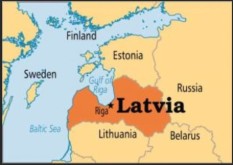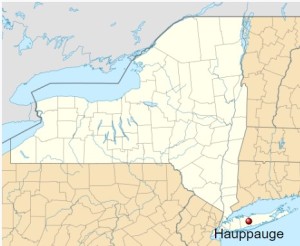10/12/22, “Latvia:
Return home or never leave the woods: Refugees and migrants arbitrarily
detained, beaten and coerced into “voluntary” returns," Amnesty.org
 “In August 2021, Latvia introduced a state of emergency
“In August 2021, Latvia introduced a state of emergency
at the Belarus border,
preventing people from seeking asylum and legalizing pushbacks.
Latvia’s abuse of emergency powers
escalated into acts constituting torture and other ill-treatment,
arbitrary detention, and the use of intimidation and violence to force people
to return “voluntarily.” While Latvia sought
to keep refugees and migrants
from racial or ethnic minorities out,
it welcomed 35000 refugees from Ukraine.”…
page 32: “USE OF TASERS
A number of people described commandos administering electric shocks to
various parts of people’s bodies with objects that Amnesty International has
concluded were tasers. While the SoE legislation in Latvia allows for the use of force by law enforcement officials in some cases, incidents documented in this
 report indicate that commandos used tasers in a gratuitous or punitive manner
report indicate that commandos used tasers in a gratuitous or punitive manner
rather than in self–defence or with a view to restraining people presenting a real threat.
Adnan recounted: “I asked them for food, and the guard said come with me
I will give you food
and attacked me with electric shock.”
He recounted that they would normally be attacked
from the neck down,
including genitals.
155 Representatives of the Latvian Ombudsman told Amnesty International that they had heard allegations regarding the use of tasers in September 2021 but noted that in the specific case presented to their attention and considering “the information provided by State Border Guard about their equipment while doing border monitoring,”
they could not verify the allegation.
The Ombudsman stated that the incident in question
involved classified information
and the office could not provide further information about it; they
referred to another incident being forwarded to the Internal Security Bureau.
It should be noted that Latvia’s regulations on the use of “special means”
specifically allows
both the police and the border guard
to use electroshock devices.156 On the occasion of the LIBE Committee’s visit to Latvia,
authorities maintained that “Border guards were not equipped with electroshock devices.” 157
Whether tasers may be part of the equipment of
the police or the army, in the exercise of their powers while assisting the border guard’s operations,
was left unaddressed.
As previously mentioned, Aleksandra Jolkina maintains that the Latvian Police
declined to disclose any details to her “about the police units assisting the border
………………………..
“155 Remote interviews with Adnan of 10 March, 17 May, 7 June and 11 July.
156 See: Regulations of the Cabinet of Ministers No. 55 of 18 January 18 (prot. No. 5 § 21) Rules on the types of special means and the procedure for their use, (Noteikumi par speciālo līdzekļu veidiem un to lietošanas kārtību), para.7, https://likumi.lv/ta/id/224905–noteikumi–
par–specialo–lidzeklu–veidiem–un–to–lietosanas–kartibu
157 In the context of LIBE’s meeting with the Ministry of Interior and the State Border Guard including regional Frontex Liaison officer based in Riga. LIBE Committee, Mission Report following the LIBE mission to Vilnius, Lithuania, and Riga, Latvia, 2022, page 4″
……………………..
page 33:
“guards at the Belarus border.”158 Based on publicly available document, the use of electroshock devices is part of the curriculum offered by the State Police.159
“When [Latvian officers] arrived, they started hitting us,
and they told us to look down
and sit on our knees and put our hands on our head. The whole group was put in a van.
They used electricity, like electric shock. They used it on my shoulder, back. They were
using it freely, whatever part was close to them, biceps, hands etc.
We stayed close to three months [at the border], when people were coming, they were using it
[electrocution], hitting people.”
Zaki, a man from Iraq, who spent around three months at the border since December 2021….
The unregulated and reckless use of tasers in the absence of a threat, as described in the cases above, constitutes torture; the relevant incidents should be urgently and effectively investigated.
OTHER FORMS OF VIOLENCE AND DEGRADING TREATMENT UPON APPREHENSION OR TRANSFER, INCLUDING OTHER ACTS AMOUNTING TO TORTURE
In addition to the use of tasers, people described
beatings by kicks and punches,
and in some cases attacks with objects or weapons.
Several people stated that
commandos committed violence against them while making them board vans or inside vans, during or before transfers. Omar and Bilal, two men from Iraq who were at the border together in fall of 2021 recounted: “Commandos in black outfits took us two hours after we crossed into Latvia.
They took us to the forest, to the tent and while they were taking us to the tents, they attacked us and used the electric shocks.
They hit us all, there was no difference.”
“They would punch us until we got in the van and after…
Sometimes when you tried to look, they hit you,
if you only look up you are done. They can hit you for up to 50 minutes.
Before entering the van, they hit you with hands, legs. Then in the van with the taser.”…
page 7: “CONCLUSIONS AND RECOMMENDATIONS…
Since August 2021, Latvian authorities have exploited
unjustified emergency powers
to target certain groups of non–white refugees and migrants,
systematically deny them access to asylum, and harassing, and coercing them
into returning to their countries of origin under duress.
Latvia should withdraw the state of emergency order
and refrain, in the future, from invoking a state of emergency or other
exceptional measures to derogate from the state’s human rights
obligations in the migration context…Latvian authorities should eradicate, in law and practice,
the systematic use of migration–related detention of people admitted from the border and
the detention of accompanied and unaccompanied children.
They should also ensure the regular and unimpeded access of NGOs and independent observers to border and detention facilities and treat detainees in accordance with international law and standards.”…
...........................
 10/30/22, “Lee Zeldin for Governor Rally with Ron DeSantis in Long Island, New York Draws Massive Crowd,” yournews.com
10/30/22, “Lee Zeldin for Governor Rally with Ron DeSantis in Long Island, New York Draws Massive Crowd,” yournews.com 









